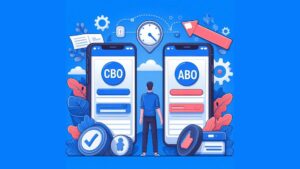When choosing eCommerce platforms, think about who in the company (or from outside hired agencies) will be responsible for things like project management, development and design. Then, keeping the cart firmly behind the horse, make sure that all stakeholders involved in the eCommerce platform launch are on the same page regarding business needs and budget.
Further Reading:
Different stakeholders may have different priorities. However, it will be a much smoother process if there is agreement on the budget and timelines allowed for the project from the very beginning. Generally all the costs associated with eCommerce platform on-boarding fall into these 4 categories:
- Design costs
- Migration costs
- Costs to ensure you retain SEO traffic
- Maintenance costs
Design costs
Often a re-platform project is a great time to refresh your website’s appearance and design as well. In fact, some redesign will likely be inevitable. You can use this as an opportunity to hone your design and create a more user-friendly interface.
Map out how your core users will journey through the site. This will involve creating templates and wire-frames to determine how your users interact with your content and products. You want them to be able to find what they’re looking for and make purchases with fewer clicks and a positive overall interaction with your brand. Much like with your development and integration plans, you will need to make a decision on whether or not to handle design internally or outsource to a contractor or agency specializing in design. These decisions will be the first step in determining a budget for site design.
Migration costs
Maintaining the integrity of your data is a vital part of the re-platform process, so this is not a place to
skimp on budget calculations. Making sure all of your product, category, transactional, and customer
data makes the migration successfully to the new platform is critical to your business. Have a conversation early on with any platforms you are considering moving to about the costs and assurances around data migration.
- What sort of data migration services/agreements do they offer?
- Do they offer catalogue transfer services?
These costs can be significant, so factoring them into your re-platform budget is important before you make a final decision on your platform. After all, a poor transfer could result in faulty product mapping, incorrect product recommendations or images, and mishandled customer data. All of these can impact your conversion rates and, more importantly, lose customer faith in your brand.
Costs to ensure you retain SEO traffic
Speaking of migration costs, as important as keeping your data clear so that customers can continue to find what they need once they’re on your site is helping them to find your site in the first place.
Don’t lose the valuable SEO equity you’ve built in your current site with a poor re-platform plan.
Your internal SEO team (or an agency of SEO specialists you outsource to) will need to do due diligence in SEO discovery and a thorough content audit. You will also need to create a URL structure
and redirection plan. Depending on if you do this with an internal team or use an agency, your budget for this process will vary.
Maintenance costs
And finally, your budget doesn’t stop the moment your new platform is up and running. Even the most
well-oiled of platform machines will require plenty of nurturing post-launch. How much will it cost to keep your online store running?
These costs can include maintenance fees, continuing development and design work, platform support, SEO and data analytics, security and PCI compliance (if not included), and updates and patches.
Other Things To Consider When Choosing an Enterprise Ecommerce Solution
For an enterprise business to perform like you need it to, a number of systems need to work together
harmoniously. Whether you’re predominantly B2B or B2C, customer experience is likely a big component of your success. You need to keep customers happy, the website up and available, and logistics like payments and shipping chugging along. You may also be faced with a continual need to implement new tools for marketing, ecommerce, and other teams. And of course, there’s an expectation that everything will work flawlessly with the existing tech stack.



